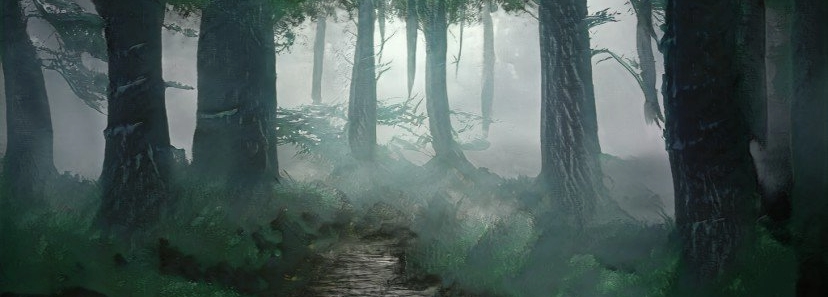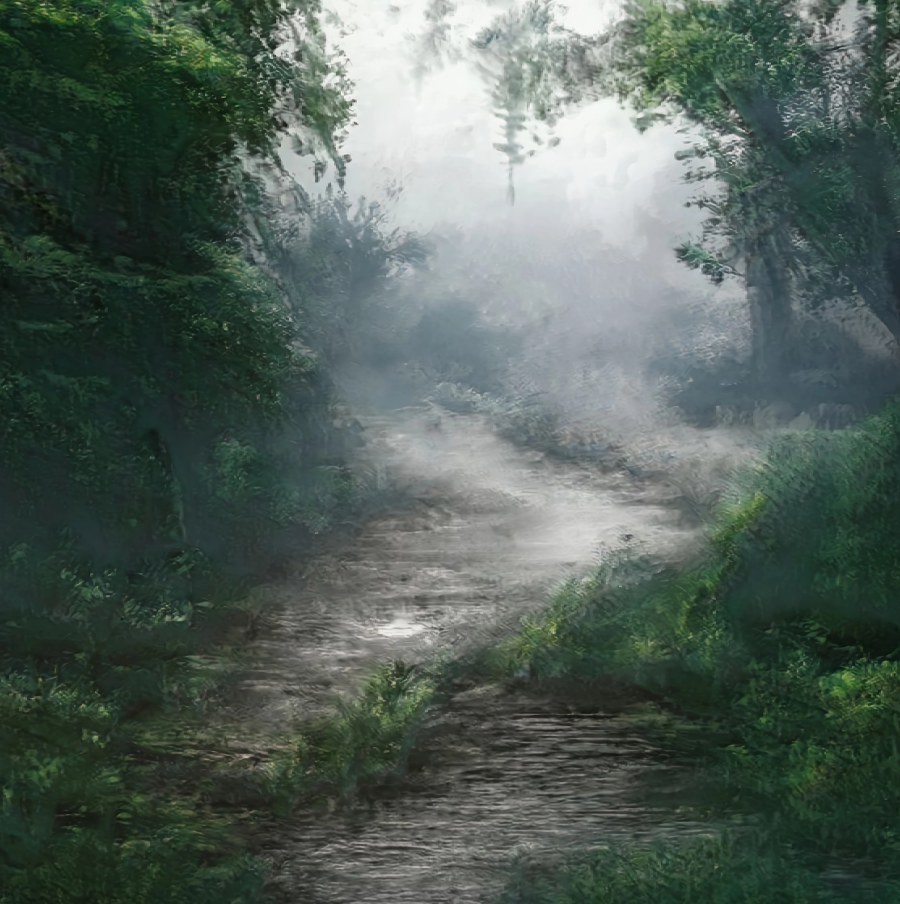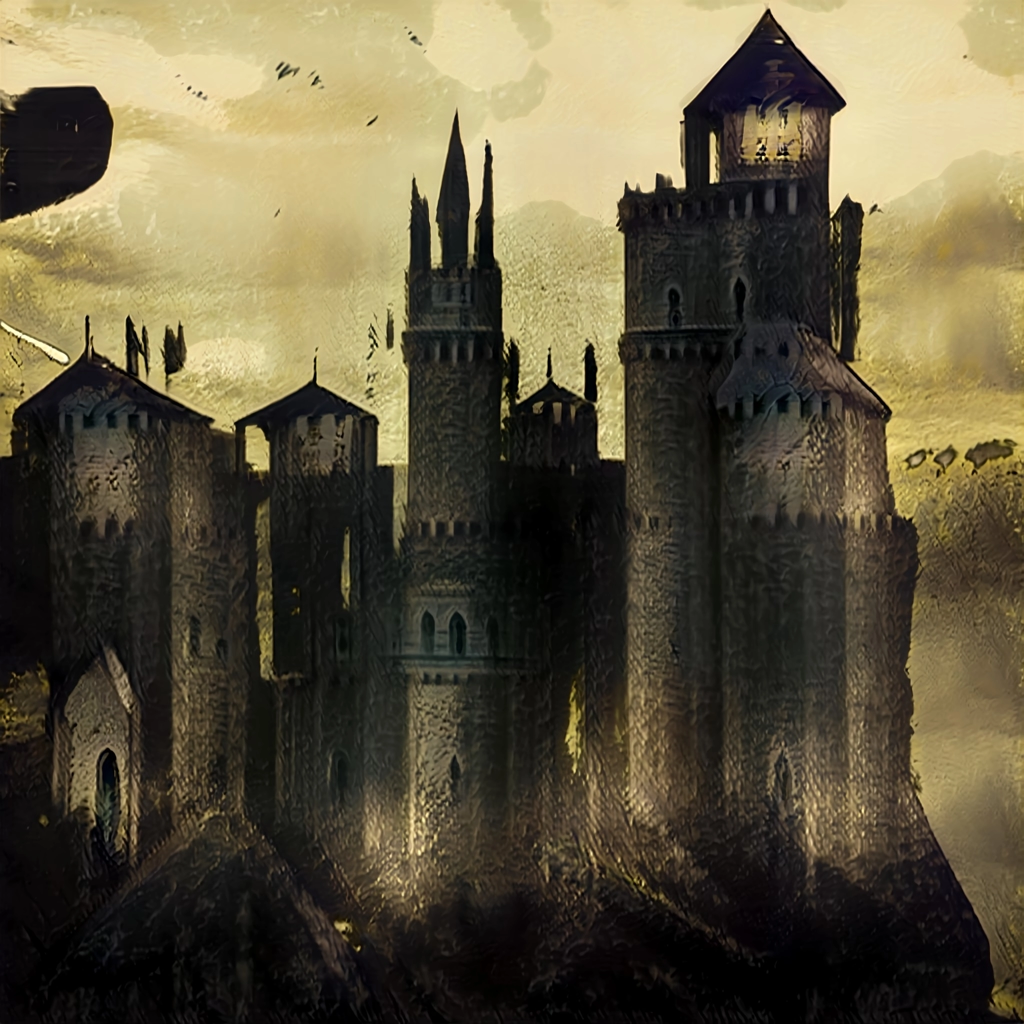Great Northern Swamp
Through dark empires and great cataclysms, the swamp has seen it all. If a land could talk, the Great Northern Swamp would have a lot to say...
To the north of the Markovia Alliance and east of the Ice Reach Mountains lies the fog trees and moss islands of the Great Northern Swamp. This enormous expanse of wetlands is the largest swamp on the world of Illuria, perhaps the largest swamp acorss the known Worldspace.
The name of ‘Great Swamp’ or even ‘Great Northern Swamp’ is misleading. This location is not a true swamp, but a temperate rain forest. The name of 'Great Swamp' is an ancient name, taken from records that date back to the earliest recorded history of Illuria, the distant First Age.
Early explorers of that age entered the region on the southwestern edge. The wetlands they found were more marsh than rain forest, giving explorers the wrong impression. This lead to the misleading name which has persisted over the generations.
If you ask the locals, they’ll tell you that’s the nature of the Great Swamp. It doesn’t want to be ‘figured out’ and delights in changing the rules on you when you least expect it.
Not Quite Fields of Marshy Green
The broad stretch of the rain forest lies to the East of the Ice Reach Mountains, and north of the Shattered Lands regions. It comprises the main northeastern section, and coastline, of the Pavia content on Illuria.
The chill winds blowing down from the polar caps over the icy waters of the Hoarfrost Sea and the dark Tempest Ocean to the east batter this area. But the cold rarely penetrates more than a few kilometers into the rain forest. This is because of the region’s unique geography.
The wetlands, rain forest, and life there are possible because of the land itself under the Great Swamp. This land is rolling foothills formed from primordial lava flows from now dormant volcanoes in the Ice Reach Mountains.
Those volcanoes may be dormant, but the below the volcanic rock there is still an active lava flow close enough to the surface to warm the underground water. Hot springs are common, and the shape of the ancient foothills provides a natural break against arctic weather that moves south to the swamp.
What weather breaks over the northern volcanic rock hills is met by the warm southern winds blowing up from the Shattered Lands and Kindamire areas. These weather patterns originate in the distant Azuras desert in the Pavia midlands before they blow east, then north.
The mix of dusty, warm air with the frigid polar air blowing south over the Hoarfrost Sea collide to provide the steady rainfall in the region. These strong thunderstorms roam over the rain forest for days before breaking up along the coast. This also adds to the persistent fog and unusually warm temperatures.
A Unique Circle of Life
The Great Swamp hosts a wide collection of life. Some, such as the armored kynou, migrate from the fog-shrouded swamp to parts south and southwest. But there are others, such as the infamous mushroom creeper packs, blue vulture toads, sawnettle vines, or Yelm lily.
This is a vibrant location, where most species are predator or prey with deadly defense abilities.
No matter how cute they look, never touch a blue vulture toad. Swelling up like a ripe blueberry just isn’t worth it...
Can’t See the Fog for the Trees
Fog trees are a persistent sight throughout the Great Swamp. These ancient giants of the swamp form the backbone of life. The trees themselves are home to several creatures, from blue vulture toads to fire flame squirrels, and a wide variety of insects.
These trees also give the swamp its reputation for the persistent fog. The mix of hot and cold winds meeting over the swamp provides the right environment for the fog. But the primary source of the mist comes from these dense stands of trees. Fog trees naturally give off the fog as a by-product of their life cycle.
The fog is nutrient-rich, providing food for moss and lichen that live off the trees. It also provides cover for small animals and herbivores that live in or below the trees. This fog also carries the pollen for the fog trees themselves, propagating the species.
Ever On the Move
Water is a persistent resource in the Great Northern Swamp, but it is not motionless. Paths of water wind their way between the dense stands of fog trees and hardwood trees. These free-flowing channels act as the arteries of the swamp. Here, aquatic animals and reptiles thrive, feeding off the submerged and floating plants or other animals.
Going with the Flow
In between the water channels and dense stands of trees are large mounds known as ‘moss islands’. These large, spongy islands form from a buildup of rambler moss over dead clumps of bladderlilies or splatterwort water grass.
The moss islands seem stable, despite being slightly spongy when walked on. In fact, they are not stable and do slowly wander along the water channels that crisscross the region. This is how the moss islands gather fresh aquatic prey in their trailing tentacles.
Indigenous People of the Great Swamp
Ikrodin tribes were the first to arrive in the region at the end of the distant First Age, when tyrannus fungus and giant scorpion fish roamed the land. In the ages that followed, these tribes slowly merged, often for survival, as empires and conquerors tried to take the Great Swamp by force. This continued until the Third Age, when the people now called the Eltaa formed out of four ikroden tribes and one collection of human settlers that banded together for mutual defense against a fiend that would become the Lich Lord of the Dark Horde.
Since that time, the Eltaa have called the swamp home. Over the generations, they have learned how to use the herbs, plants, and resources of the swamp. During the Sixth Age, their knowledge helped provide miracle advancements for medical and scientific discoveries. The most important was the use of ‘Herbal Runes’.
After the Final War, the Eltaa’s knowledge has become invaluable to plague-ridden regions. Physicians and herbalists often travel to the Eltaa long-bark settlements to study their Herbal Runic lore or trade for curative recipes. This has been a regular event since civilization has crawled back to life in the five hundred years after the apocalyptic Final War.
Heart of Darkness
Tread lightly... there really is something out there watching...
A malevolent shadow covers the south and southwestern sections of the Great Swamp. Cold and damp like stagnant algae, this shadow is a stain on the otherwise green and vibrant rain forest. Records from the Third through the Seventh Age make it quite clear why. This is the heart of the Cursed Lands of the Lich Lord.
Squatting in the center of that shadow lies Castle Killkeep. A dark stone and metal fortress that was the home of the Lich Lord, KILLJOY. Ancient stories surround the location and describe the Lich Lord’s consistent plans to subdue his rivals, and turn the Worldspace into a polluted, dark nightmare.
The shadow of the Cursed Lands still permeates this part of the Great Swamp, even though the Lich Lord and his Dark Horde fell five hundred years ago. Trees are twisted mockeries of their actual self; former fog trees with branches that reach for the nearest animal or passerby. Bladderlilies will explode, showering hot acid on nearby victims.
Water here is stagnant and often polluted. Decayed remains of processing factories sit alongside jagged lakes and channels with water stained a putrid green or glowing purple color, thick with runoff chemicals.
Only the most well-prepared, or foolish, explore this region. Magically misshapen flora and fauna stalk the dark and twisted thickets, or lie in wait on dark branches of corrupted fog trees. Nightmarish creatures that have a stronger resemblance to a stitched golem than a natural animal. Historians that have studied the area agree these are the descendants of the Lich Lord’s experiments left unattended.
There are also many reports of scorpion terradrones in this area. These hive-minded robots roam in packs. Once they were used to help terraform hostile environments, now their terraforming seems bent on creating an unnatural, twisted environment that is almost hostile to organic life.
Alternative Name(s)
Great Swamp, Creeper Mire
Type
Wetland / Swamp
Location under
Included Locations
Related Ethnicities
Related Tradition (Primary)
Inhabiting Species
Related Myths







Beautiful work my friend, and a great beginning for SummerCamp!
World Anvil Founder & Chief Grease Monkey
Follow Solspire Chronicles · Twitter · World Anvil Changelog
“No act of kindness, no matter how small, is ever wasted.”
- Aesop
Thank you, Dimi! I really wanted that first one to be "just right"